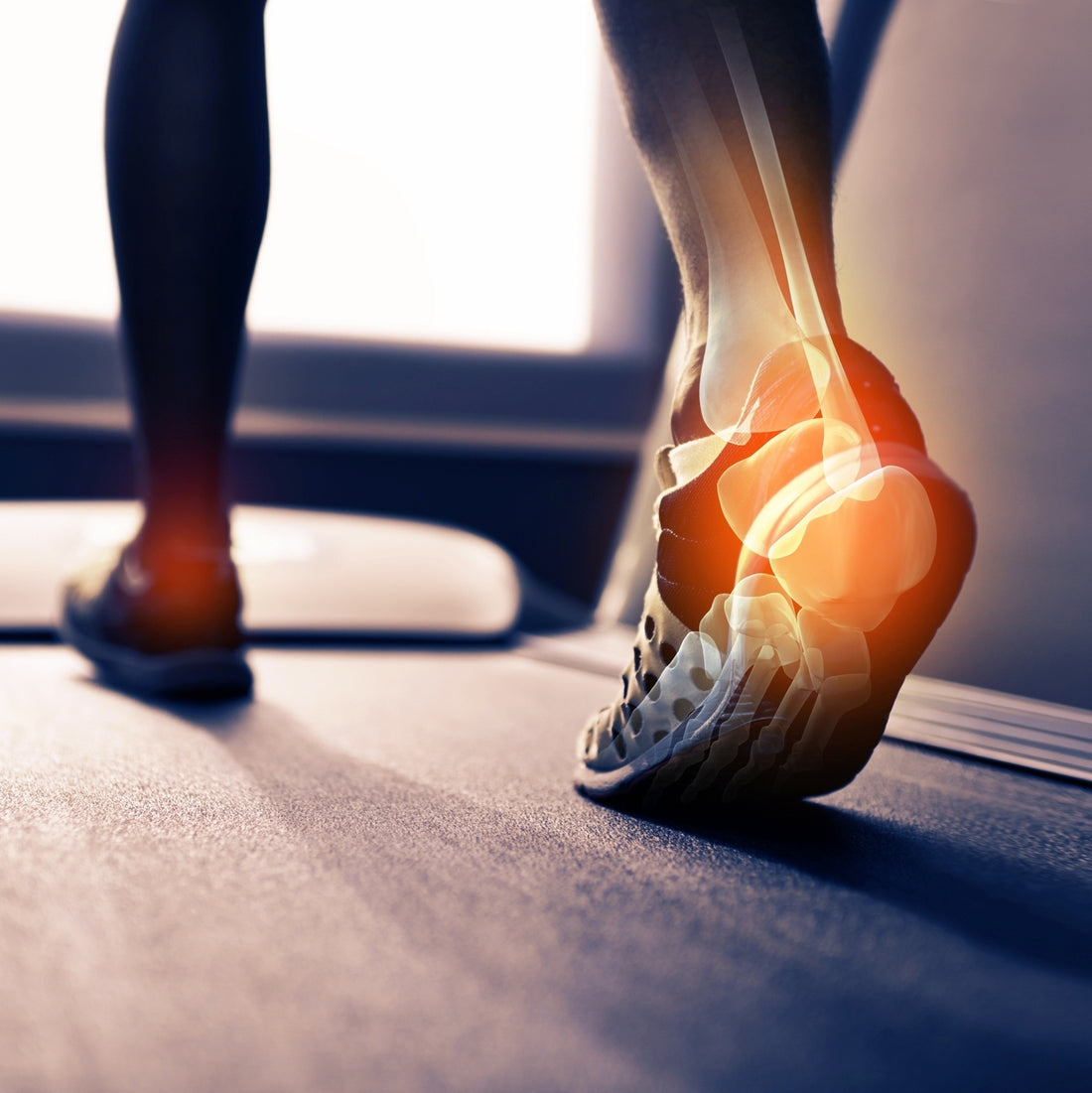
Running: Ankle Pain, Causes and Prevention
Share
Running is a great form of exercise, providing significant health benefits, including improved cardiovascular fitness, muscle strengthening and stress reduction. However, ankle pain is a common complaint among runners, especially those who are new to the sport or who increase the intensity of their workouts too quickly. If you’re suffering from ankle pain while running, this article offers a detailed guide to the potential causes and the best ways to treat and prevent the problem.
Common Causes of Ankle Pain
-
Sprains Sprains occur when the ligaments that support the ankle are stretched or torn due to a twisting or rolling of the foot.
-
Achilles tendonitis Achilles tendonitis is inflammation of the Achilles tendon, which connects the calf muscles to the heel. It can be caused by a sudden increase in the intensity or frequency of training.
-
Stress Fractures Small cracks in the ankle bones resulting from repetitive impact can cause persistent pain and worsen with activity.
-
Plantar Fasciitis Inflammation of the plantar fascia, the tissue that runs along the base of the foot, can cause heel and ankle pain.
-
Arthritis Arthritis can cause pain and stiffness in the ankle joints, affecting mobility while running.
What to Do to Relieve Pain
-
Rest Reduce or temporarily stop running to allow your ankle to heal. Rest is essential to prevent the injury from worsening.
-
Ice Apply ice to the affected area for 15-20 minutes, several times a day, to reduce inflammation and relieve pain.
-
Compression Use bandages or elastic compresses to help reduce swelling and stabilize the painful area.
-
Elevation Whenever possible, elevate your foot above the level of your heart to reduce swelling.
-
Medication Analgesics and anti-inflammatories can be used, but always under medical supervision.
-
Stretching and Strengthening Exercises Performing specific exercises to stretch and strengthen the muscles around the ankle can prevent future injuries. Achilles tendon stretches and balance exercises are recommended.
-
Physical Therapy Seeing a physical therapist can be a great way to receive personalized treatment. They can provide massage techniques, specific exercises, and other therapies to speed recovery.
-
Running Technique Assess your running technique. Runners who land on their heels or have an excessively long stride are more prone to ankle injuries. If you are unsure about your running technique, consider seeking professional advice. At Home Training , we offer individualized training services that include assessment and correction of running technique. Our experts can help you fine-tune your form, ensuring that you run efficiently and safely.
-
Proper Equipment Make sure you wear shoes that are appropriate for your foot type and terrain. A pair of sneakers with good support and cushioning can make all the difference.
Prevention
- Proper Warm-Up : Always warm up thoroughly before you start running. This prepares your muscles and joints for exercise.
- Gradual Increase in Intensity : Avoid sudden increases in training distance or intensity. Follow a gradual progression.
- Muscle Strengthening : Include strengthening exercises for your ankles, legs and core in your workout routine.
- Hydration and Nutrition : Staying well hydrated and eating a balanced diet contributes to muscle and bone health.
Personalized Training Service
If you’re experiencing hip pain while running, it may be time to consider more personalized coaching for your specific needs. At Home Training , we offer personalized training services that can help you fine-tune your running technique, develop a proper muscle-strengthening program, and provide guidance on injury prevention. Our experts are ready to help you achieve your goals safely and effectively. Visit our website for more information and to schedule a consultation with one of our professionals.
Conclusion
Ankle pain while running can be uncomfortable and even demotivating, but with the right measures, it is possible to treat and prevent this problem. Always remember to listen to your body and seek professional help if the pain persists. With care and attention, you can continue to enjoy the many benefits that running offers without compromising your health.
For more tips on training and health, keep following our blog. Happy training!


